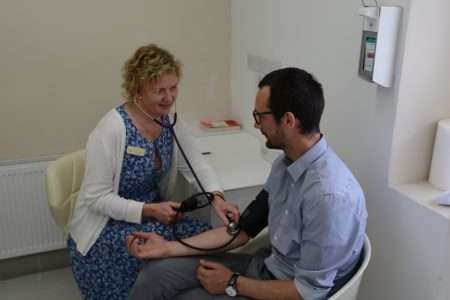In the era of modern medicine, Diazepam, or Valium as it’s more commonly known, has become a double-edged sword. As relief from anxiety, muscle spasms, or seizures, diazepam was a regularly prescribed drug despite the potential for dependence.
Although it is still prescribed, most GPs will not provide a course for longer than 7 days. Despite this, valium abuse remains a challenge as the drug is still obtainable from illicit sources.
If you have been prescribed diazepam for long-term use, or you are obtaining and abusing it from illegal sources, it’s important to understand how prescription drug addiction develops. Recognising the signs and potential dangers of severe withdrawal is vital to a safe recovery.
Treatment involves a combination of medical detoxification and treatment, alongside relapse prevention strategies. If you were previously prescribed diazepam for anxiety, our dual diagnosis treatment programme works to address both the addiction and the mental health disorder.
Key Takeaways
- Diazepam addiction is driven by prolonged use, increasing tolerance, and misuse, especially when combined with other substances.
- Recognising addiction involves observing physical signs, behavioural changes, and psychological symptoms, including increased tolerance and withdrawal.
- Effective treatment includes medically supervised detox, therapy for underlying issues, rehabilitation, and ongoing support to prevent relapse.
- Inpatient treatment offers comprehensive care and a structured environment to significantly reduce the risk of overdose and relapse.
What is Diazepam?
Diazepam, also widely recognised as Valium, is a powerful benzodiazepine medication prescribed to alleviate anxiety, ease muscle spasms, manage insomnia, and mitigate symptoms of acute alcohol withdrawal. (1) It’s a versatile drug that works by enhancing the effects of GABA, a neurotransmitter in your brain responsible for regulating nervous system activity. By boosting GABA, diazepam helps calm the nervous system, making you feel more relaxed and tranquil.
If you’re struggling with anxiety or panic attacks, you might find that diazepam can help reduce your symptoms, allowing you to navigate your daily activities more comfortably. For those experiencing uncomfortable muscle spasms, diazepam serves as a muscle relaxant, providing relief and improving mobility. Additionally, if insomnia is a challenge, the sedative properties of diazepam can aid in achieving a restful night’s sleep, essential for overall health and well-being.

Download our Brochure
Why Is Diazepam Addictive?
Valium is addictive because it influences your brain’s natural chemistry, by altering the GABA neurotransmitter system, leading to a cycle of tolerance and dependence. (2) When you take Valium, it enhances the effect of the GABA neurotransmitter in the central nervous system, inducing a calming effect. This mechanism, while beneficial in the short term for anxiety or muscle relaxation, can lead to diazepam addiction if the drug is used inappropriately or for prolonged periods.
Diazepam like all benzodiazepines has a short half-life of approximately 4 hours, which makes it an easy drug to abuse. The more you use Valium, the more your brain adapts to its presence, gradually requiring higher doses to achieve the same effects – a hallmark of tolerance. This cycle can escalate, leading to valium addiction as your body and mind become increasingly dependent on the drug to function normally.
Who is at Risk From Diazepam Addiction?
Identifying who’s most vulnerable to diazepam addiction is crucial in addressing and preventing this complex condition. If you’ve previously struggled with substance misuse or addiction, you’re at a higher risk of developing an addiction to diazepam. This includes not only prescription drugs but also illicit substances. Prescription duration and dosage matter significantly; being prescribed diazepam for an extended period or at high doses increases your susceptibility to addiction.
Moreover, if you’re struggling with co-occurring mental health disorders, such as anxiety or depression, your risk escalates. These conditions can drive you towards diazepam, seeking relief, but they also set the stage for dependency and addiction. Misusing diazepam, like taking it without a prescription or in ways not medically directed, is a direct path to addiction. Key risk factors include using diazepam recreationally, combining it with other substances like alcohol or opioids, and attempting to self-medicate without professional guidance.
Understanding these risk factors is the first step towards prevention. By recognising these vulnerabilities, you can approach diazepam use with caution, ensuring it remains a helpful tool rather than a path to addiction.
How To Recognise Diazepam Addiction
After exploring who’s most at risk for diazepam addiction, it’s essential to know how to recognise its signs in yourself or someone close to you. Identifying diazepam addiction requires attentiveness to physical signs, behavioural changes, and psychological symptoms that may develop over time.
Physical signs of addiction can include noticeable drowsiness, shallow breathing, pale skin, and poor coordination. These symptoms should raise immediate concerns, especially if they appear without a clear medical reason. Additionally, you might observe behavioural changes such as increased anxiety, restlessness, irritability, and a tendency towards social isolation. These shifts often signal deeper issues, including possible substance misuse.
On a psychological level, symptoms can range from depression and insomnia to more severe conditions like paranoia and hallucinations. Memory problems may also become evident, affecting day-to-day functioning. If you or someone you know is neglecting responsibilities, showing increased signs of bruises or injuries without clear explanations, or demonstrating disorganised thinking, these could be crucial indicators of addiction.
In such cases, seeking professional intervention and medical support is vital. These resources can guide you through the complexities of addiction, offering the necessary care and strategies for effective treatment and recovery.

Long-Term Effects of Diazepam Abuse
Exploring the long-term effects of diazepam abuse reveals a concerning landscape of cognitive, emotional, and physical health challenges. (3) When you engage in prolonged misuse of diazepam, you’re at a higher risk of facing significant memory problems and cognitive impairments. These aren’t just fleeting moments of forgetfulness; they can profoundly impact your daily functioning and quality of life.
Moreover, chronic abuse of this medication may lead to depressive symptoms and mood disturbances. It’s not uncommon to find yourself trapped in a cycle of emotional instability, where feelings of sadness and irritability become a constant backdrop to your life. This emotional turmoil can exacerbate existing mental health conditions or even trigger new psychiatric symptoms.
Physical health isn’t spared either. Long-term diazepam abuse can lead to serious respiratory problems, putting your overall physical well-being at risk. As your body becomes increasingly dependent on the substance, your health issues may compound, creating a complex web of challenges that require professional intervention.
It’s crucial to understand these risks and seek help if you’re struggling with diazepam abuse. Remember, it’s not just about overcoming addiction; it’s about reclaiming your health and well-being for a brighter future.
Diazepam Withdrawal Stages
Withdrawal symptoms, which can range from uncomfortable to severe withdrawal symptoms like anxiety, muscle pain, and seizures, make quitting without professional help a daunting challenge.
As you embark on this journey, it’s vital to recognise early withdrawal symptoms, such as anxiety, insomnia, and restlessness. These are your body’s initial reactions to the absence of diazepam, signalling the start of the withdrawal process.
As withdrawal progresses, you may notice an increased sensitivity to light and sound, coupled with muscle stiffness. These symptoms underscore the importance of professional support and the need for a carefully managed approach. Severe withdrawal stages can escalate to hallucinations, seizures, and delirium tremens. Such conditions require immediate medical attention to ensure your safety.
To navigate these challenges, tapering diazepam under medical supervision is a recommended strategy. This method gradually reduces the diazepam dose, helping to mitigate withdrawal symptoms effectively. Throughout this process, professional support is indispensable. A team of healthcare providers can offer the necessary guidance and care, ensuring a smoother and safer withdrawal experience. Remember, seeking help is a sign of strength, not weakness, as you move toward recovery.
Overdose Risks
Recognising the overdose risks associated with diazepam, especially when mixed with alcohol or other substances, is crucial for your safety. A Valium overdose can occur when you take the medication in high doses or combine it with other drugs, which significantly elevates the danger. It’s essential to understand that mixing Valium with alcohol or opioids not only increases the risk of overdose but can lead to life-threatening situations.
If you’re struggling with co-occurring mental health disorders, the likelihood of using higher doses to achieve the desired effects may increase, thereby raising the risk of an overdose. This situation calls for a heightened awareness of the potential dangers and an understanding of the symptoms associated with a Valium overdose.
Immediate actions in the event of an overdose include calling emergency services and closely monitoring vital signs. Substance misuse treatment typically involves medical intervention and stabilisation in a medical facility, underscoring the importance of professional help in such critical situations.
Being informed about these risks and the serious consequences of mixing Valium with other substances or taking it in high doses is a step towards safeguarding your health and well-being.
Contact Us Today
Start your Recovery Journey with Smarmore Castle Clinic
Getting Help for Diazepam Addiction
If you believe you have an addiction to diazepam, help is available and recovery is possible.
The journey to recovery often begins with detoxification, followed by therapy and rehabilitation, tailored to meet your specific needs.
Reaching out for professional medical advice and support can be the first step towards regaining control of your life and health.
Detoxification
Detoxification, the critical first step in overcoming Diazepam addiction, involves the careful elimination of the drug from your body with professional support to ensure safety and manage withdrawal symptoms effectively.
It’s essential to not go through this phase alone. Medically assisted withdrawal is vital, as it provides a safe and comfortable process tailored to meet your individual needs. This method significantly reduces the risk of severe reactions that can occur during detox.
The professionals guiding you through this phase are equipped with the knowledge and tools to address any challenges that arise, ensuring a smoother transition away from dependency. Remember, detoxification is more than just removing the substance; it’s about setting a solid foundation for your recovery journey, with each step thoughtfully planned to support your well-being.
Therapy and Rehabilitation
After completing the critical step of detoxification, your journey continues with therapy and rehabilitation, essential components for overcoming Diazepam addiction. It’s vital to engage in professional intervention and support, which pave the way toward sustainable recovery. Rehabilitation facilities are equipped to offer tailored therapy, addressing your unique needs and circumstances. This personalised approach ensures you’re not just another number; your recovery journey is as individual as you are.
Through therapy, you’ll delve into the underlying triggers of your addiction, gaining insights that are a vital part of recovery. You’ll also develop coping strategies, empowering you to manage stress and avoid relapse. Remember, support from healthcare professionals and peer groups significantly enhances your chances of success, providing both expertise and empathy as you navigate the path to recovery.
Benefits of Inpatient Treatment
Why consider inpatient treatment for Diazepam addiction? This approach offers round-the-clock medical supervision and support, creating a structured environment that significantly reduces the risk of relapse. If you’re addicted to Valium, understanding the benefits of inpatient treatment can be a crucial step towards recovery.
Inpatient treatment provides a haven away from the triggers and stressors of your daily life, allowing you to focus solely on getting better. With access to medical detoxification services, you’re not alone in managing the challenging withdrawal symptoms. This controlled setting ensures your safety and comfort, making the initial step of detox less daunting.
You’ll benefit from a comprehensive care plan tailored to your needs, encompassing various therapies and counselling. This holistic approach addresses not just the physical aspects of addiction but also the psychological underpinnings. The constant presence of healthcare professionals ensures that any emergent issues can be promptly addressed, offering you the best chance for a successful recovery.
Embracing inpatient treatment for Diazepam addiction means choosing a path that supports recovery and growth. You’re not just treated as a patient but as a person deserving of a compassionate, professional approach to overcoming addiction.

Thousands of People Have Received Addiction Treatment at Smarmore Castle…
Preventing a Diazepam Relapse in Recovery
Preventing relapse in your recovery journey from Valium addiction requires developing robust coping skills and strategies tailored to your unique needs. It’s essential to recognise that overcoming addiction isn’t a one-size-fits-all process. Your path to staying drug-free involves identifying triggers that could lead you back to substance use. Understanding these triggers and having a concrete plan to manage them is a critical component of relapse prevention.
At Smarmore, patients will engage in aftercare as part of their addiction treatment. The programme is tailored to support patients and help them maintain their recovery and prevent relapse after the initial phase of treatment. This outpatient service is flexible, allowing patients to live at home while balancing work, family responsibilities, and their commitment to recovery. It involves tailored therapy sessions that equip patients with coping strategies for relapse prevention
Frequently Asked Questions
-
What Are the Symptoms of Diazepam?
You might experience drowsiness, shallow breathing, or difficulty waking up as symptoms of diazepam. Increased bruises, anxiety, and memory issues can also indicate misuse or addiction, requiring professional help for recovery.
-
What Are the Long-Term Side Effects of Diazepam?
Long-term diazepam use can lead to memory problems, cognitive impairment, increased risk of depression, mood disorders, and physical dependence. You might also experience other severe withdrawal symptoms, difficulty concentrating, and needing higher doses over time.
-
What Is the Maximum Diazepam Dose Per Day?
The maximum diazepam dose per day typically ranges from 4 mg to 40 mg, depending on the condition you’re treating. You should follow your doctor’s advice to avoid the risk of adverse effects.
-
What if Diazepam Is Not Working?
If Diazepam isn’t working for you, it’s crucial to consult your healthcare provider. You might need a dosage adjustment or a different treatment. Never change your dose on your own to avoid potential risks.
References
1 https://www.ncbi.nlm.nih.gov/books/
2 https://molecularbrain.biomedcentral.com/articles/10.1186/s13041-017-0325-8


